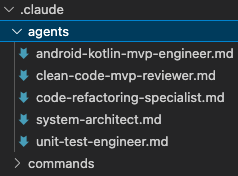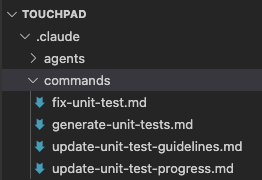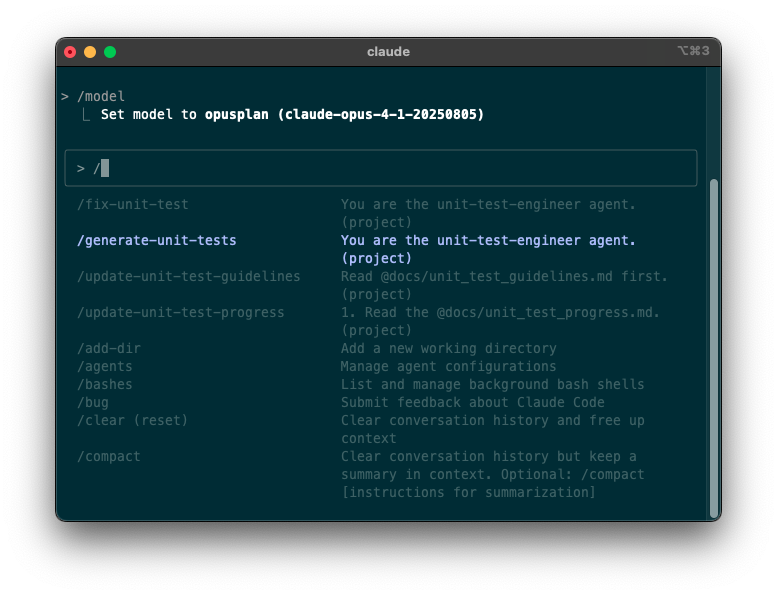Claude Code Complete Tutorial: 30+ Practical Tips to Boost AI Development Efficiency【2025 Latest】
This article combines Anthropic’s official best practices with personal usage experience to share how to effectively leverage Claude Code, this powerful AI development tool for software development. The goal is to help you treat AI as a “capable assistant” rather than an “uncontrollable black box,” using rules, memory, and proper workflows to truly achieve 10x development efficiency improvement.
Claude Code’s AI Agent Core: Rule and Memory
Claude Code, this AI development tool, is actually like a very smart junior engineer who needs your guidance. To maximize its effectiveness and boost development efficiency, you need to understand two core concepts. If you want to dive deeper into the complete architecture of AI Agents, you can refer to my other article AI Agent Series: Understanding the Core Interaction Logic of LLM, RAG, and MCP.
Rule
Rules determine the development principles that Claude Code must follow. They’re like internal coding style guides or architecture decision records in a company. These rules ensure that the output of this AI development tool meets your project standards and improves development efficiency.
Memory
Memory stores learned knowledge and decisions, preventing Claude Code from constantly “forgetting” and repeating mistakes. With a memory system, this AI development tool can accumulate project knowledge and become a true assistant for improving development efficiency.
Practical Application Examples
Anthropic officially recommends combining rules and memory to enable Claude Code, this AI development tool, to stably participate in long-term projects and continuously improve development efficiency.
Poor approach:
- Simply telling the AI “please use correct indentation” may confuse the AI
Correct approach:
- Clearly write “consistently use 2-space indentation” in
CLAUDE.md, and the AI can maintain consistency long-term
👉 Pro tip:
When Claude makes mistakes, don’t just correct it verbally. More importantly, “update the memory” by writing the correct solution into CLAUDE.md. This way it will truly “learn” for next time.
Essential Setup
Step 1: Create Project Memory CLAUDE.md
This is Claude Code’s “core brain” and the key to improving AI development efficiency. It’s recommended to place it in the project root directory and continuously update it. This file will become the primary basis for AI to understand your project. If you need help setting up your development environment, you can refer to Setting up Development Environment on a New macOS.
Memory File Content Structure
Basic Information:
- Common Commands:
npm run build,npm test - Code Style: Indentation rules, naming conventions
- Architecture Patterns: Unique design decisions of the project
Advanced Information:
- Workflows: PR processes, testing and deployment strategies
- Domain Knowledge: Business logic, API specifications
- Debugging Records: Common issues and solutions
Advanced Memory Usage Tips
The memory system is not just a single file, but a complete hierarchical architecture:
- Use
/initto quickly generate initialCLAUDE.md - Use
@path/to/fileto reference other memory files - Use
/memorycommand to update directly
Memory Hierarchy
Different levels of memory have different priorities and applicable scopes. Understanding this hierarchical structure helps you better organize project knowledge.
| Memory Type | Scope | Location | Priority | Description | Sharing Scope |
|---|---|---|---|---|---|
| Enterprise Policy | Enterprise | macOS: /Library/Application Support/ClaudeCode/CLAUDE.mdLinux: /etc/claude-code/CLAUDE.mdWindows: C:\ProgramData\ClaudeCode\CLAUDE.md | Highest | Enterprise coding standards, security policies, compliance requirements | All users within the organization |
| Project Memory | Team Shared | ./CLAUDE.md | High | Project architecture, coding standards, shared workflows | Shared with team via version control |
| User Memory | Personal Preference | ~/.claude/CLAUDE.md | Medium | Code style preferences, personal tool shortcuts | All personal projects |
| Project Memory (Local) | Local Project | ./CLAUDE.local.md | Low | Personal project-specific preferences (deprecated) | Only current personal project |
Basic Tips
Essential Operations for Quick Start
These are basic commands you’ll use every day when working with Claude Code. Mastering them can significantly improve work efficiency and development efficiency.
- Quick Initialization: Use
/initto help projects create basic memory fileCLAUDE.md - Interrupt Anytime: Press
Escapeto end current operation, preventing AI from going too far - Manual Mode: Always review suggestions, don’t blindly auto-accept
Context Management Tips
Context is key to Claude Code understanding your needs. Proper context management allows this AI development tool to assist you more precisely and significantly improve development efficiency.
- Clear Context: After completing a task, maintain good habits by using
/clearor starting a new session. This avoids old tasks interfering with new tasks, leading to imprecision and wasting unnecessary tokens - Compress Conversation: Use
/compactwisely to retain conversation highlights and save tokens. This prevents the context window from reaching its limit - Update Memory in Real-time: When you solve a problem, ask AI to summarize and store it in memory files
CLAUDE.mdor/docs/xxx.md. This prevents the AI Agent from making the same mistake next time
✅ Official Recommendation: Keep interactions simple. Don’t give AI a bunch of requirements at once, but break them down step by step. Solve only a small part in each round, making it easier to control results.
Intermediate Tips
Separation of Planning and Execution
When facing complex tasks, separation of planning and execution phases is very important.
- Plan Mode - Plan First Then Write: Press
shift+tabto switch. Just like programming requires drawing flowcharts for planning first, let AI think before acting - Parallel Work: Open multiple Claude Code instances, dividing work to handle different functions. Each instance handles specialized tasks, avoiding context confusion
Large Project Management Strategies
Large projects require more refined management approaches. The following strategies can help you better control Claude Code’s output and improve development efficiency. For projects requiring good architectural design, it’s recommended to first understand basic concepts of design patterns.
- Managing Large Modifications: When encountering large modifications, subdivide first then fix in stages. This ensures quality at each stage
- Establish Dedicated Guidelines: Place guidelines for architecture design, APIs, unit tests, and code reviews in
/docs. Let AI read first then write, ensuring compliance with project specifications
Advanced Tips
Thinking Ability Control
Different difficulty problems require different levels of thinking. Through keywords, you can adjust Claude Code’s thinking depth, allowing this AI development tool to better handle complex tasks.
When encountering more difficult problems, you can add these keywords to enhance AI’s thinking ability:
-
think- Basic thinking, suitable for simple logic problems -
think hard- Deep thinking, suitable for problems requiring analysis -
think harder- Deeper analysis, suitable for complex architectural design -
ultrathink- Ultimate thinking mode, suitable for the most difficult challenges
Subagents for Specialized Roles
In complex projects, different tasks require different professional knowledge. Claude Code’s Subagents can help you achieve this division of labor, significantly improving the performance of this AI development tool.
Use /agents to create different subagents, keeping contexts separate and focused only on their own roles. Each agent can have its own dedicated memory and task scope. This is like forming a virtual team where each member has their area of expertise.

Custom Slash Commands
Repetitive work can be simplified through custom commands. This not only saves time but also ensures consistency, making it an important feature of Claude Code for improving development efficiency.
Defining repetitive prompts as slash commands can greatly improve work efficiency.
Practical Case: Unit Test Workflow
- Define Test Commands:
-
/generate-unit-test- Generate unit tests -
/update-unit-test-guidelines- Update test guidelines
-
- Workflow:
/generate-unit-test XXXPresenter # Ask AI to write XXXPresenter tests → Review and tell AI what needs correction → /update-unit-test-guidelines # Update guidelines to avoid same mistakes next time


Other Advanced Features
These features are suitable for developers with special needs. Mastering them can make your Claude Code workflow smoother.
- Permission Management: Use
/permissionsto control which files AI can modify. This effectively protects sensitive files from accidental modification - Git worktrees: Develop multiple branches in parallel, avoiding interference. Especially suitable for projects that need to maintain multiple versions simultaneously. For multi-account management, please refer to Managing Multiple GitHub Accounts Using SSH
-
TDD Process: Write tests first, then write code. Claude Code is particularly suitable for this iterative development approach
- Permission Management: Use
/permissionsto control which files AI can modify. This effectively protects sensitive files from accidental modification - Git worktrees: Develop multiple branches in parallel, avoiding interference. Especially suitable for projects that need to maintain multiple versions simultaneously
- TDD Process: Write tests first, then write code. Claude is particularly suitable for this iterative development approach
Workflow Optimization
🌟 Golden Workflow
This process has been battle-tested and can ensure continuous improvement of AI output quality.
Read Guideline → Execute Task → Review & Correct → Update Memory
-
Read Guideline Let the AI Agent first read relevant guidelines (
/docs/xxx_guideline.md). This ensures AI understands the project’s specifications and expectations. -
Execute Task Tell the AI Agent specifically what to do. Task descriptions should be clear, quantifiable, and have clear completion criteria.
-
Review & Correct Review results and tell AI what needs correction. This step is important as it helps AI understand your expectations.
-
Update Memory Update learned experiences to memory files. This avoids repeating mistakes next time and makes AI increasingly precise.
💡 Practical Experience: Following the above steps, Claude Code becomes increasingly accurate. I recommend everyone start establishing various guidelines for their projects. After improving these guidelines together, you can have N avatars referencing different guidelines to help you handle different tasks.
Traditional Development Process Integration
AI is not meant to replace existing processes, but to integrate into them. Here are the best practices for integration.
Explore → Plan → Code → Commit
-
Explore First work with Claude to understand requirements. Let AI help you analyze technical challenges and possible solutions for requirements.
-
Plan Plan implementation steps (using Plan mode). Break large tasks into manageable small steps.
-
Code Write code step by step, checking constantly. Test each small feature completion to ensure quality.
-
Commit Only commit after verification passes. Let AI help you write clear commit messages.
Practical Tips Summary
These tips come from actual project experience and can help you handle various development scenarios.
UI Development Tips: If encountering design drafts or UI development, you can use “screenshot comparison” method. Let Claude help you compare differences and continuously iterate until it matches the design draft.
Automation Integration: In CI/CD pipelines, Claude Code can also run headlessly. This enables automated checking and testing, improving team development efficiency. To learn more about CI/CD setup, refer to Jenkins Series Tutorial.
Knowledge Management: Create a project-specific docs/ folder to store various guidelines. Let Claude Code quickly learn project specifications and become a true project member. Document visualization can use Excalidraw AI Tool.
Claude Code vs Other AI Tools Comparison
Feature Comparison Table
| Feature | Claude Code | GitHub Copilot | ChatGPT | Cursor |
|---|---|---|---|---|
| Project Memory System | ✅ Complete hierarchical memory | ❌ | ❌ | ✅ Basic memory |
| Custom Commands | ✅ Slash Commands | ❌ | ❌ | ✅ |
| Subagents Division | ✅ | ❌ | ❌ | ❌ |
| Plan Mode | ✅ | ❌ | ❌ | ❌ |
| File System Operations | ✅ Full support | ❌ | ❌ | ✅ |
| Development Efficiency Boost | 10x | 3x | 2x | 5x |
Frequently Asked Questions (FAQ)
Q1: Who is Claude Code suitable for?
A: Claude Code is suitable for developers of all levels, from beginners to senior engineers. Beginners can use it to learn best practices, while senior developers can significantly improve development efficiency through it, saving 80% of repetitive work time.
Q2: How to get started with Claude Code?
A: First install Claude Code CLI, then execute the /init command in the project root directory to create the CLAUDE.md memory file. Then set up your development rules and workflows, and you can start using this powerful AI development tool.
Q3: Will Claude Code replace programmers?
A: No. Claude Code is designed to assist rather than replace developers. It handles tedious repetitive work, allowing developers to focus on high-level tasks that require creativity and experiential judgment, such as architectural design and business logic.
Q4: Does using Claude Code require payment?
A: Claude Code offers both free and paid versions. The free version can already meet most development needs, while the paid version provides larger context windows, faster response speeds, and advanced features.
Q5: What programming languages does Claude Code support?
A: Claude Code supports all mainstream programming languages, including but not limited to JavaScript, Python, Java, C++, Go, Rust, TypeScript, etc. It can also handle various frameworks and toolchains.
Conclusion: AI as Capable Assistant, Not Replacement
Core Philosophy
The best way to use Claude Code, this AI development tool, lies in three key elements:
- Clear Rules: Use Rule and Memory to build project knowledge base
- Step-by-step Interaction: Simplify tasks and advance step by step, rather than throwing massive requirements at once
- Continuous Optimization: When errors occur, immediately update memory to make AI more stable
Anthropic’s Vision
Anthropic’s philosophy is actually simple but profound:
👉 AI should not replace you, but let you “focus on high-level decision making”
This includes Architecture design, SOLID principles application, Design Pattern selection, System Design planning, and other work requiring experience and judgment. Leave the tedious repetitive parts to AI.
Best Practices Summary
🎯 Golden Process: Ask Claude Code to read guidelines → Tell AI Agent what you want it to do → Review and tell AI to fix problems → Update Rule & Memory (avoid repeating mistakes next time)
Testing shows that following the above steps, Claude Code becomes increasingly accurate. I recommend everyone start establishing various guidelines for their projects (docs/xxx_guideline.md).
After you perfect these guidelines, you can have N avatars referencing different guidelines to help you handle different tasks. This isn’t science fiction, but a high-efficiency development model that can be achieved right now through Claude Code, truly achieving 10x development efficiency improvement.
Welcome everyone to share their own tips and exchange ideas together! 🚀
References
Enjoy Reading This Article?
Here are some more articles you might like to read next: